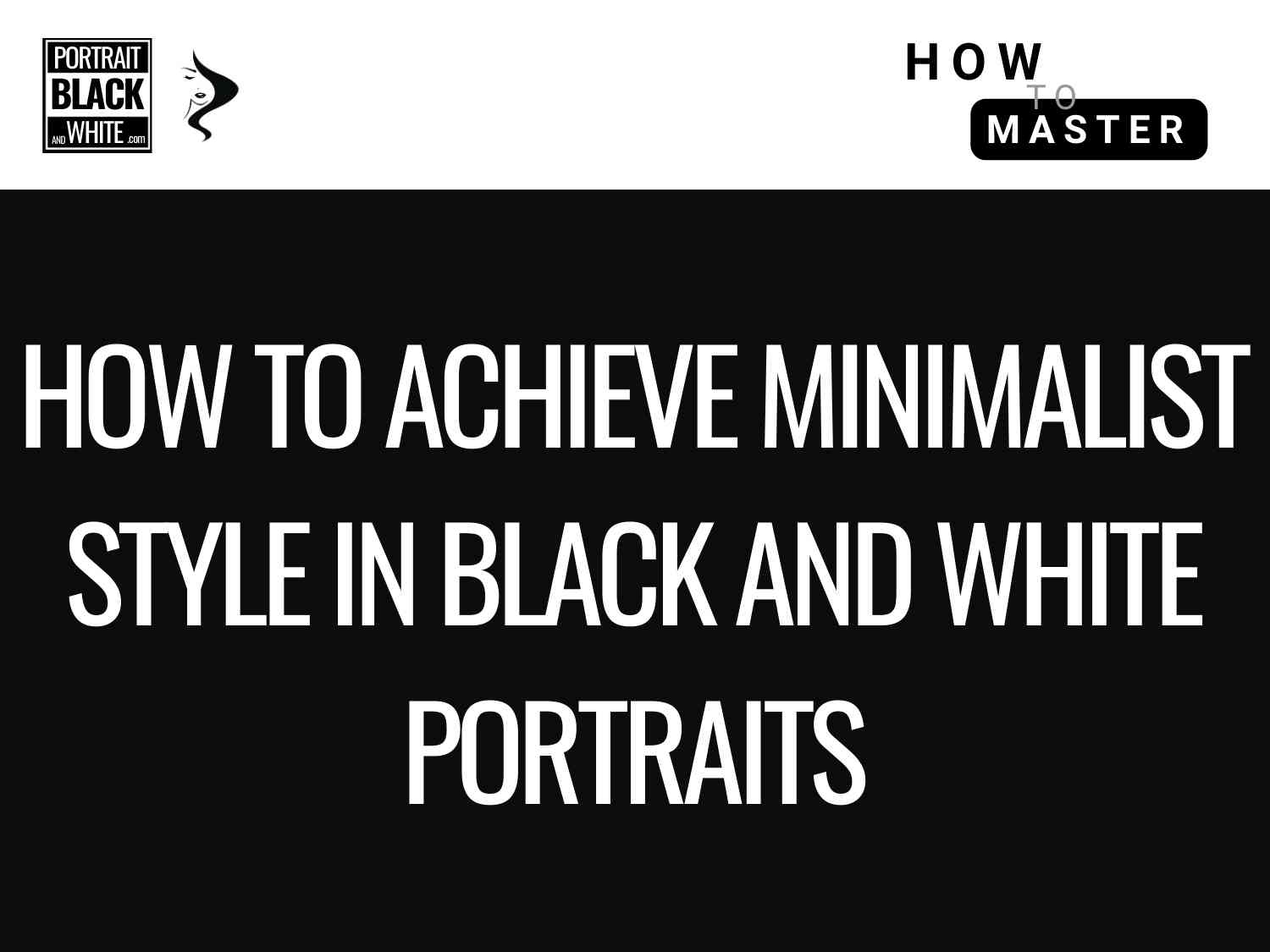Minimalism in photography is not about doing less—it is about doing only what matters. In black and white portraiture, minimalism strips away distractions, leaving the viewer with pure form, emotion, and presence. Without color, the essentials of composition, tone, and light become even more critical. A minimalist black and white portrait must feel intentional, not empty.
This guide explores how to create portraits that embody simplicity while remaining rich in impact.
What Defines Minimalist Black and White Portraiture?
Minimalism is often misunderstood as plainness. In reality, it is about clarity. A minimalist portrait has:
- A single subject or focal point—the eye knows immediately where to look.
- Negative space—empty areas that emphasize presence rather than clutter.
- Controlled tones—a limited palette of grays, blacks, and whites used with purpose.
- Restraint in detail—everything in the frame must contribute to the mood.
The challenge is to reduce elements without reducing meaning.
Step 1 – Simplify the Composition
Minimalism begins with framing.
- Choose clean backgrounds. Plain walls, seamless paper, or wide open skies prevent distraction. In black and white, even subtle textures (brick, fabric, wood) become more visible, so select them carefully.
- Limit props. A chair, a window frame, or even a single piece of clothing can be powerful if it supports the story. Too many objects dilute focus.
- Crop decisively. A tighter crop may serve the minimalist aesthetic better than leaving empty, uncontrolled edges.
Every element included should earn its place.
Step 2 – Harness Negative Space
Negative space is not wasted space—it is visual silence. In black and white, it enhances drama by isolating the subject.
- Place the subject small within the frame against a large, simple background.
- Use asymmetry—positioning the subject off-center adds tension.
- Allow empty areas to “breathe.” They give weight to the subject’s presence.
Minimalist portraits often gain their power from what is absent rather than what is present.
Step 3 – Control Light with Precision
Light defines mood, and in minimalist portraits it must be deliberate.
- High-key minimalism: Soft, broad light creates luminous skin against near-white backgrounds. This suggests purity, openness, or delicacy.
- Low-key minimalism: A single hard light against darkness isolates the subject dramatically, creating intensity and mystery.
- Shadows as space: Instead of filling every shadow, let parts of the frame fall into blackness. The absence of detail strengthens minimalism.
Minimalist light is about economy: using just enough to define form, never more.
Step 4 – Tone Management in Editing
Editing is where minimalism either flourishes or fails.
- Reduce tonal clutter. Avoid too many mid-gray variations; emphasize strong blacks and clean whites with controlled transitions.
- Preserve texture selectively. Keep detail where the eye must focus (eyes, lips) and soften areas that compete.
- Simplify curves. Instead of complex S-curves, use restrained tonal shaping that emphasizes contrast only where needed.
Minimalist editing means removing excess until only the essential remains.
Step 5 – Expression and Gesture as Focus
When the frame is stripped down, the subject’s expression carries more weight.
- Small gestures—a tilt of the head, a glance, the line of shoulders—become central.
- Neutral expressions can feel powerful when supported by composition and space.
- Emotions need not be exaggerated; in minimalist portraits, quietness often resonates more than drama.
The viewer’s attention is drawn to the subtlest cues when nothing else competes for focus.
Step 6 – Avoiding the Trap of Emptiness
Minimalism is not an excuse for laziness. Flat light, dull expressions, or accidental blankness do not create minimalism—they create emptiness.
To avoid this:
- Always have a clear intention. What emotion or mood should the portrait carry?
- Use negative space to support, not replace, the subject.
- Ensure that simplicity feels chosen, not accidental.
A successful minimalist portrait feels deliberate, not unfinished.
Practical Approaches
- Single-light portraits: Use one key light with no fill. The simplicity of lighting supports the minimalist aesthetic.
- Backdrop experiments: Alternate between all-white and all-black backdrops to study how each transforms mood.
- One-feature focus: Create a portrait where only one feature (eyes, hands, or profile silhouette) carries the story.
- Series approach: Minimalism often works beautifully in sequences. A set of three portraits with consistent framing and subtle variations builds impact through repetition and restraint.
Final Thought
Minimalist black and white portraits succeed when they balance simplicity with intensity. The fewer the elements, the more each one matters. Every shadow, line, and expression carries weight.
Minimalism does not mean emptiness—it means clarity. By reducing distractions, shaping light precisely, and emphasizing expression, portraits become timeless statements where nothing is superfluous.
In the silence of minimalism, the subject’s presence speaks louder than any decoration ever could.



Scrivi un commento